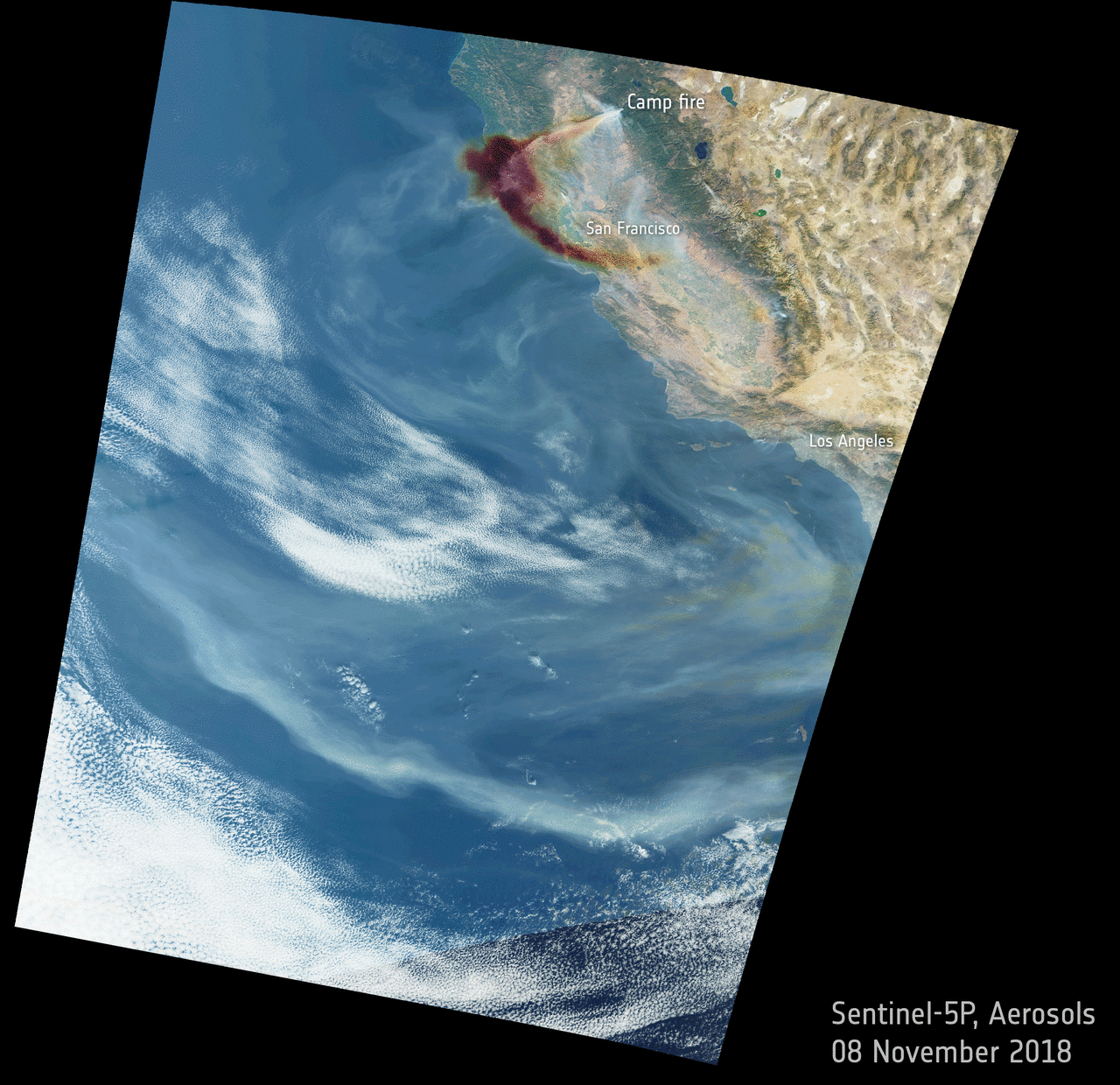Image: Paradise lost

Camp Fire in northern California, US, has, without doubt, been one of the state's most destructive. This animation uses data from different Copernicus Sentinels to show the spread of aerosols and smoke.
Over the last two weeks Camp Fire (shown here) and the Woolsey Fire in the south have burned thousands of hectares of land and reduced thousands of homes to ashes, and sadly claimed many lives. And with over 800 residents of Paradise and surroundings still missing, the death toll is likely to rise.
This animation uses data acquired between 8 and 11 November 2018 by the Copernicus Sentinel-5P mission to show how aerosols from Camp Fire spread in the atmosphere. The mission is dedicated to mapping a multitude of trace gases and aerosols that affect air quality. The animation also includes measurements from 11 November made by two instruments carried on the Copernicus Sentinel-3 satellites. One is from the ocean land colour instrument, which clearly shows smoke billowing from the fire, and the other is from the optical channels of its sea and land surface temperature radiometer, which shows the flames.
Having information acquired at the same time from different satellites and instruments helps monitor devastating events such as this.
Provided by European Space Agency

















